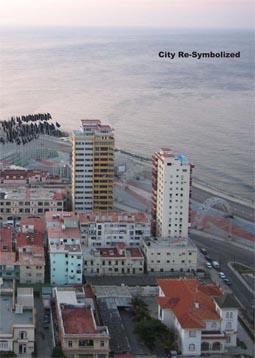City Re-Symbolized

Students: Joy Homberger, Yvonne Wanner
Location: Group work in Havana
Date: June, 2007
Type: Research project, student work, city re-symbolized
The very fabric of Havana within a socialist state is a paradox. How did a city built from the 16th century onwards, under Spanish colonialism, Cuban capitalism and American economic colonization, become part of the new socialist order? The revolutionary government had no interest in the large scale demolition of the city that they had taken control of in 1959; a desire to build some 'other' Havana in its place could not compare to resources needed carry out other pressing social changes in the country. There is also very little new architecture that would speak of Cuban revolutionary architectural style. Instead, Fidel Castro and Che Guevara made a number of inversions of the uses of existing buildings and spaces, re-assigning them in a way that 'neutralized' their associations with foreign capital. They started by appropriating the newly completed Havana Hilton, now the Habana Libre, and making it into their revolutionary headquarters. A high-rise bank in Centro Habana was converted into a hospital and, most famously, the grounds of the Country Club in Cubanacán were allocated as the site for the new national School of Art.
Many such examples exist throughout Havana and they constitute the focus of our research theme. Havana is a specific, perhaps unique example of a socialist city embedded into the completely preserved capitalist physical structure. Its metropolitan configuration, inherited in the 1959, was not only reused in terms of housing and re-settling of the population, but the volume of public programs and buildings that were expressing city’s former position as an cultural, economic, political or entertainment capital, were reused and re-symbolized as well, and brought to complacence with the socialist ideology. In that sense we speak of a ‘symbolic reuse’ or re-symbolization of the city. It is interesting to point that the republican architecture erected under Battista is in an immediate link with symbolic reuse; it is totalitarian architecture from 1950s that lends itself well for reuse as revolutionary architecture during the 1960s and onwards.
Download the Book PDF

